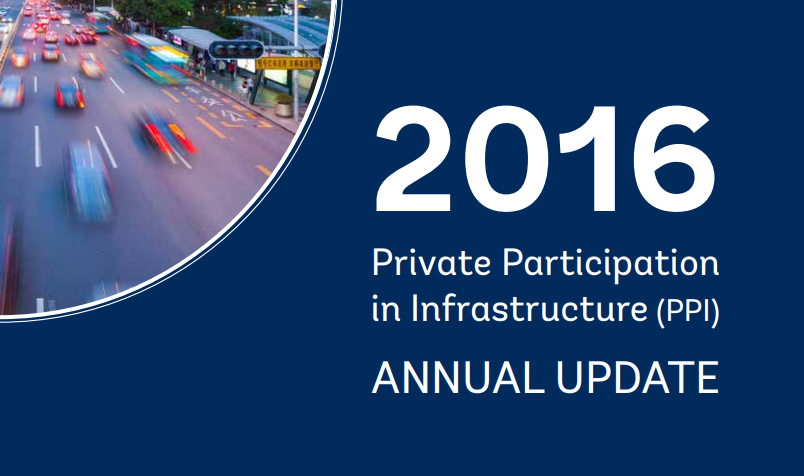
We’ve just released the 2016 update for the World Bank’s Private Participation in Infrastructure (PPI) Database and it makes for some gloomy reading. Investment commitments (investments) in infrastructure with private participation in Emerging Markets and Developing Economies (EMDEs) fell by a whopping 37% compared to 2015.
The big “bump” in activity that occurred over the period 2009-2015 has disappeared. Large economies that had big public-private partnership (PPP) programs—like Turkey, India, and Brazil—are seeing much lower levels of activity than during the peaks of that period.
Investment in infrastructure with private participation as a share of GDP also declined in 2016, to 0.3%—also its lowest level in 10 years. International Development Association ( IDA) countries saw a very modest increase in PPI investment commitments in 2016. But 2016 totals were about half of the annual average over the 2011-2015 period and only seven countries did projects.
There were some bright spots. Renewables continued to be strongly favored by private investors in EMDEs in 2016 —88% of electricity generation projects with private participation relied on renewable technology. Renewable investments totaled $20.4 billion, comprising 61% of the total investment in electricity generation projects. Furthermore, preliminary numbers in the first half of 2017 are showing a marked increase, giving cause for hope that 2016 might be the trough of a cycle.
With the increased focus on mobilizing private finance for infrastructure, the 2016 figures show how far the market needs to recover to see PPPs make a significant contribution. The overall weak levels of investment though suggest that more work needs to be done to strengthen sector financial performance in EMDEs as a whole to bring in more investment, public and private. Multilateral development banks such as the World Bank Group have a role to play in this mission by using their financial assistance to catalyze, mobilize and crowd in other sources of funds for development.
The full report can be found here: 2016 Private Participation in Infrastructure (PPI) Annual Update
Related Links:
Private Participation in Infrastructure (PPI) DatabaseHow are PPPs really financed?



Join the Conversation